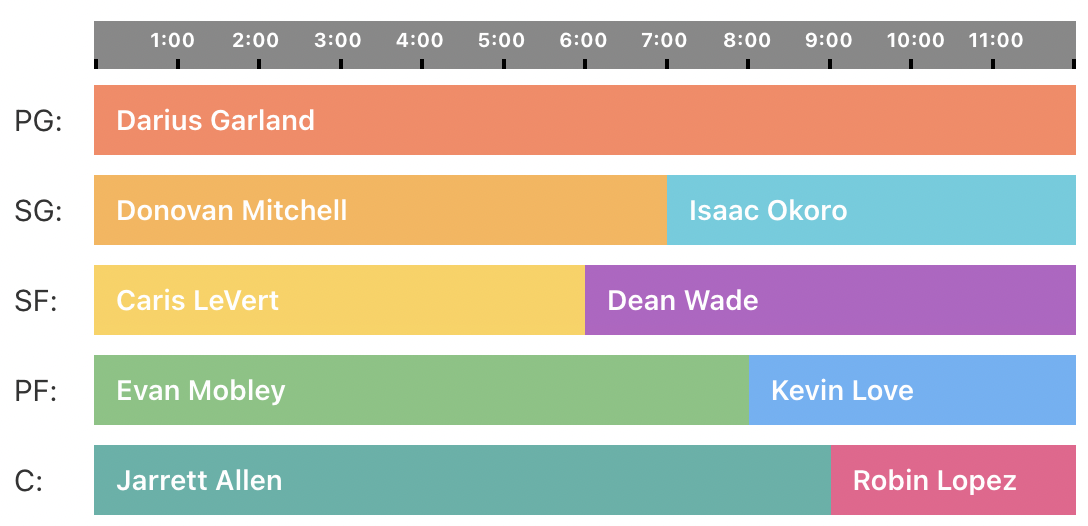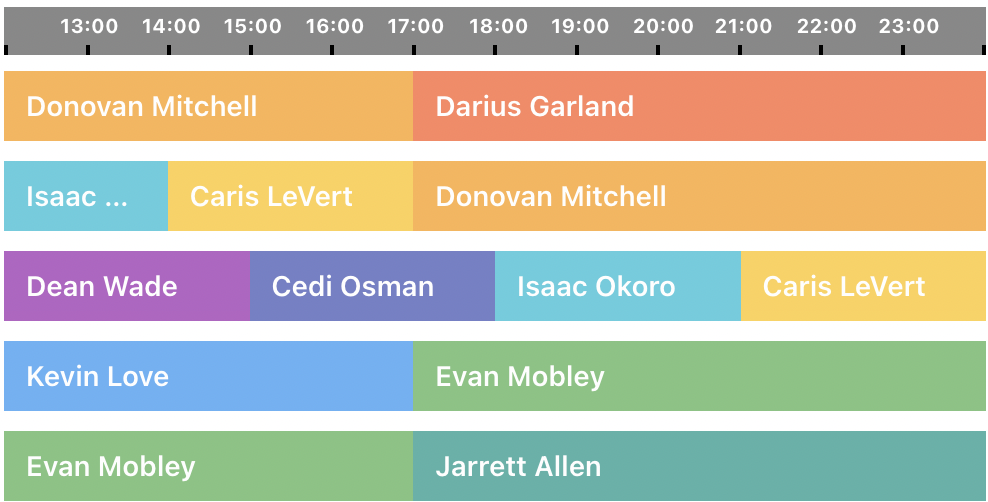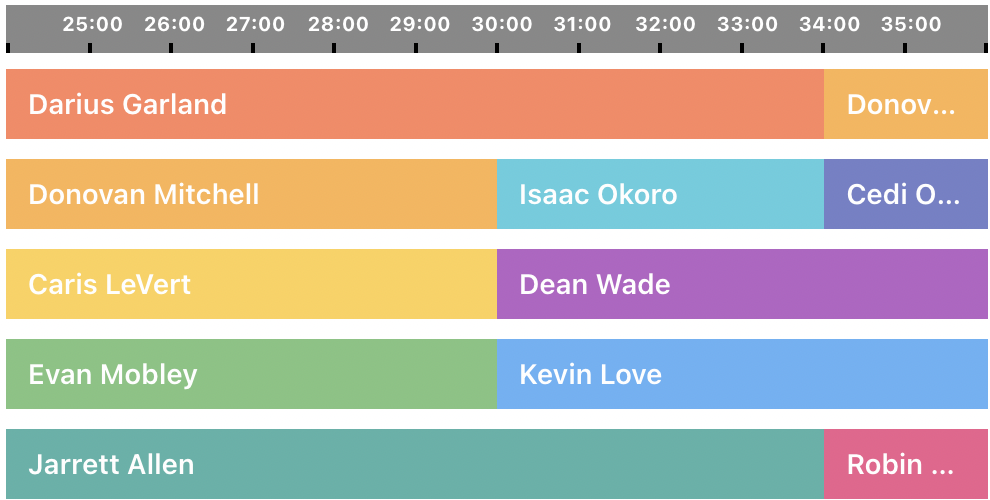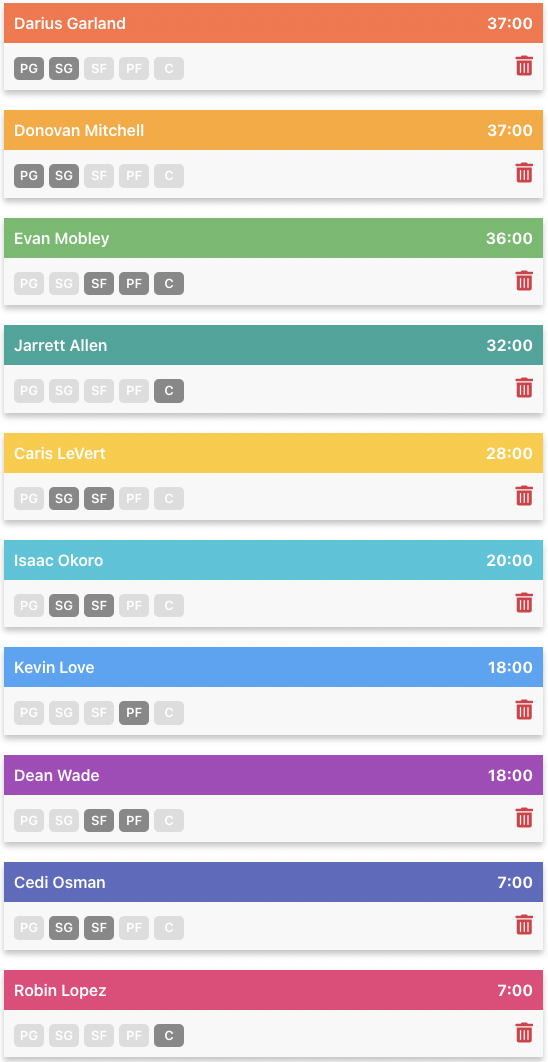Cavaliers head coach J.B. Bickerstaff during the 2021-22 season. Rob Lorenzo/ESPN Cleveland
What could the rotation look like on opening night for the Cavs?
You must have an active subscription to read this story.
Click Here to subscribe Now!
The Cleveland Cavaliers are set to open up the season this Wednesday night in Toronto against the Raptors. As of now, there are still a number of questions surrounding how the team will operate.
Of those questions, who will start at the small forward position is right at the top of the list, but it’s also leads to a bigger question of what the rotation as a whole looks like. In this exercise, we’ll try and map out what a typical rotation from Cavs head coach J.B. Bickerstaff could look like based on the preseason and other clues that Bickerstaff has said throughout training camp.
Before we begin, here are the guidelines with which we will be operating under:
Caris LeVert is the starting small forward. When Bickerstaff was asked about this prior to the team’s preseason game against Atlanta, he mentioned that LeVert had done everything right to earn that job. This, of course, came prior to a pair of terrific preseason games from Isaac Okoro. Okoro starting would obviously throw a wrench into this rotation that we’re putting down, but for now we’re guessing that LeVert will be the starter.
The Cavaliers will employ a 10-man rotation. During training camp, Bickerstaff said that 10 is the ideal number for him to play on a regular basis. Obviously, there are some other circumstances like foul trouble or particular matchups that can cause the team to deviate from this plan, but Bickerstaff said it’s very rare to be able to comfortably play 11 guys on a regular basis.
The Cavaliers will stagger guards Donovan Mitchell and Darius Garland. Bickerstaff has mentioned before that the team would like to have one of either Mitchell or Garland on the floor at all times. It’s fair to expect this to be the case for the early portion of the season until Ricky Rubio returns from rehabbing his torn ACL suffered last season.
The Cavaliers will almost stagger big men Jarrett Allen and Evan Mobley. This won’t be done quite to the same level of Garland and Mitchell in the backcourt, as there will likely be times when Robin Lopez and Kevin Love are paired up together. Bickerstaff was asked about this on Monday and gave more insight to how he thinks rotationally.
““Kind of the way that we've broken it down, there's a group of about seven guys and the objective is to try to keep four of those seven guys on the floor as much as we possibly can,” Bickerstaff said. “For the most part, last year when we were healthy, we kind of ping ponged Evan and Jarrett. With the addition of Robin, we have another guy who can protect the paint and do those things. Similar, but a different style and can get the same job done. We'll mix those guys up as much as we can.”
An educated guess says that those seven guys are Mobley, Allen, Garland, Mitchell, LeVert, Love, and Okoro. Dean Wade likely narrowly misses, followed by Cedi Osman and Lopez rounding out the 10-man group.

Again, this is operating under the presumption that LeVert is the team’s starting small forward, so he, Garland, Mitchell, Mobley, and Allen all play the first six minutes together before Wade comes into replace LeVert and Okoro comes off the bench to spell Mitchell. Later in the quarter Love and Lopez see time, while Garland plays the first 12 minutes entirely.
There’s not a large chunk of time where Allen is on the floor without Mobley, but it does make sense to pair he and Garland up together as a pick-and-roll duo. Garland and Allen already have that built in chemistry, plus despite playing the first five years with Rudy Gobert, Mitchell hasn’t shown a penchant for throwing lob passes to the big man the same way that Garland does. Pairing Mitchell with Mobley and Garland with Mobley makes the most sense.
Finally, having Robin Lopez on the floor to close out the first quarter and give both Allen and Mobley a spell would make sense. Of the 24 minutes available in the first quarter for big men, Allen and Mobley combine to play 17 of them.

During the first three preseason games that Mitchell played in, he found himself out there to start the second quarter. That would make it seem as if the Cavaliers like the thought of him leading the second unit paired with Mobley. Adding a second playmaker in the form of LeVert makes sense as the first sub in during the quarter before bringing back Garland and Allen to close the half with the starting five.

The third quarter is relatively similar to the start of the game with the initial five, but things become different by pulling Mitchell and Mobley earlier during the third quarter. This is done so the team can play them as much as possible during the fourth quarter.

The closing lineup for the Cavs could be the most fluid of this exercise, at least at the small forward spot. There may be certain nights where Okoro closes instead of LeVert, but the other four starters are sure things to be on the floor. Making sure that they’re all on the floor with six minutes left in the game could be the sweet spot for Bickerstaff.

 Playing 37 minutes per game might be a touch high for both Garland and Mitchell. It’s a number that would place them both near the top of the league in terms of minutes per game. It’s also a number that will come down once the team is able to inject Rubio into the rotation. Playing Mobley 36 minutes might be high by a minute or two, but he should be in that area.
Playing 37 minutes per game might be a touch high for both Garland and Mitchell. It’s a number that would place them both near the top of the league in terms of minutes per game. It’s also a number that will come down once the team is able to inject Rubio into the rotation. Playing Mobley 36 minutes might be high by a minute or two, but he should be in that area.
Given LeVert’s injury history, keeping him below 30 minutes is probably the right place to have him if he’s going to be kept healthy during the season. Okoro could see a minutes increase closer to 25 if he’s the starter or part of any closing lineups.
As for the rest – Love, Wade, Osman and Lopez – their minutes could all increase given various things during the game. For instance, if Love comes out shooting well, he could find himself playing as many as 25 minutes a game.
Like most things, this is fluid and just a rough estimate.





